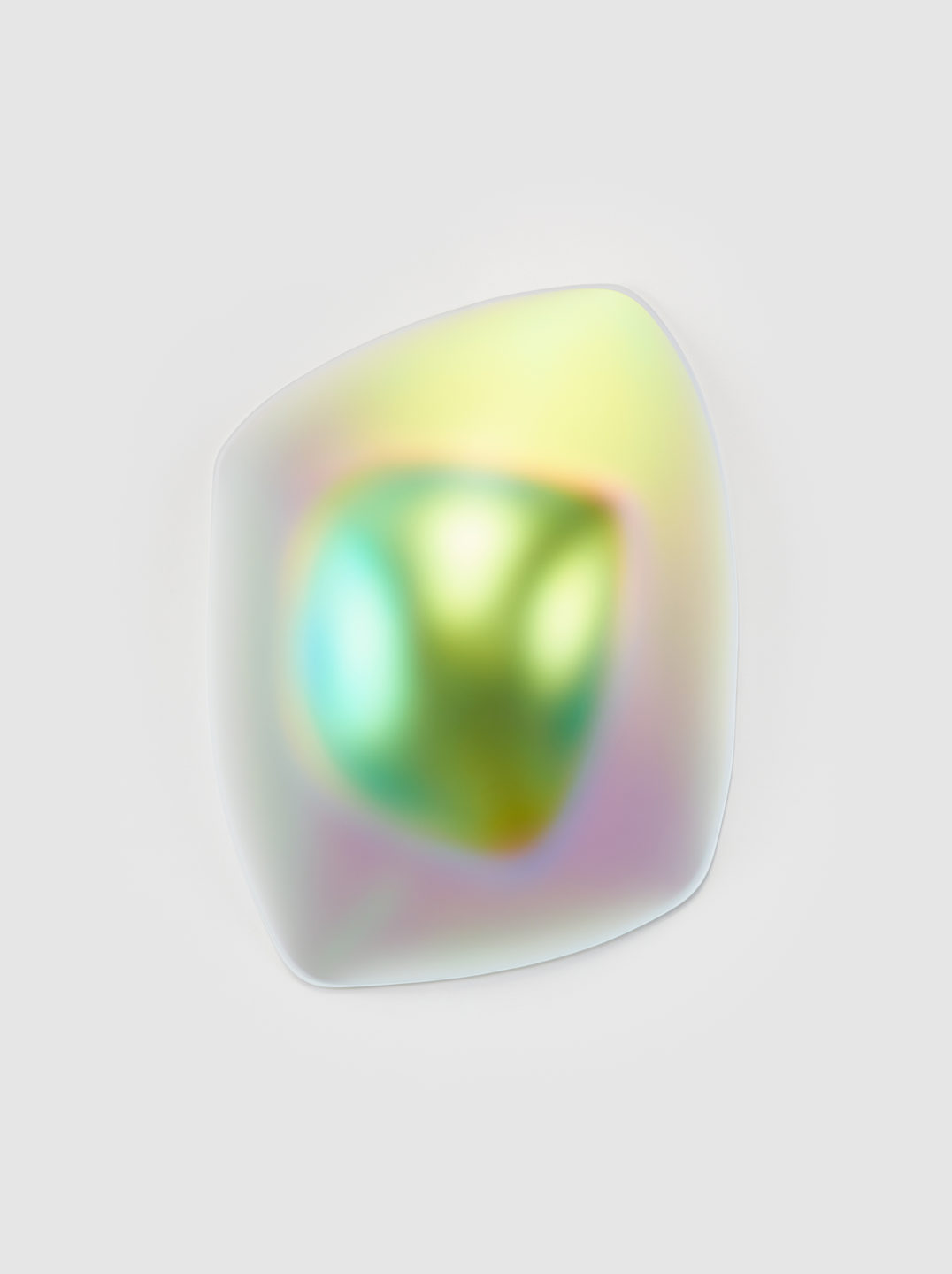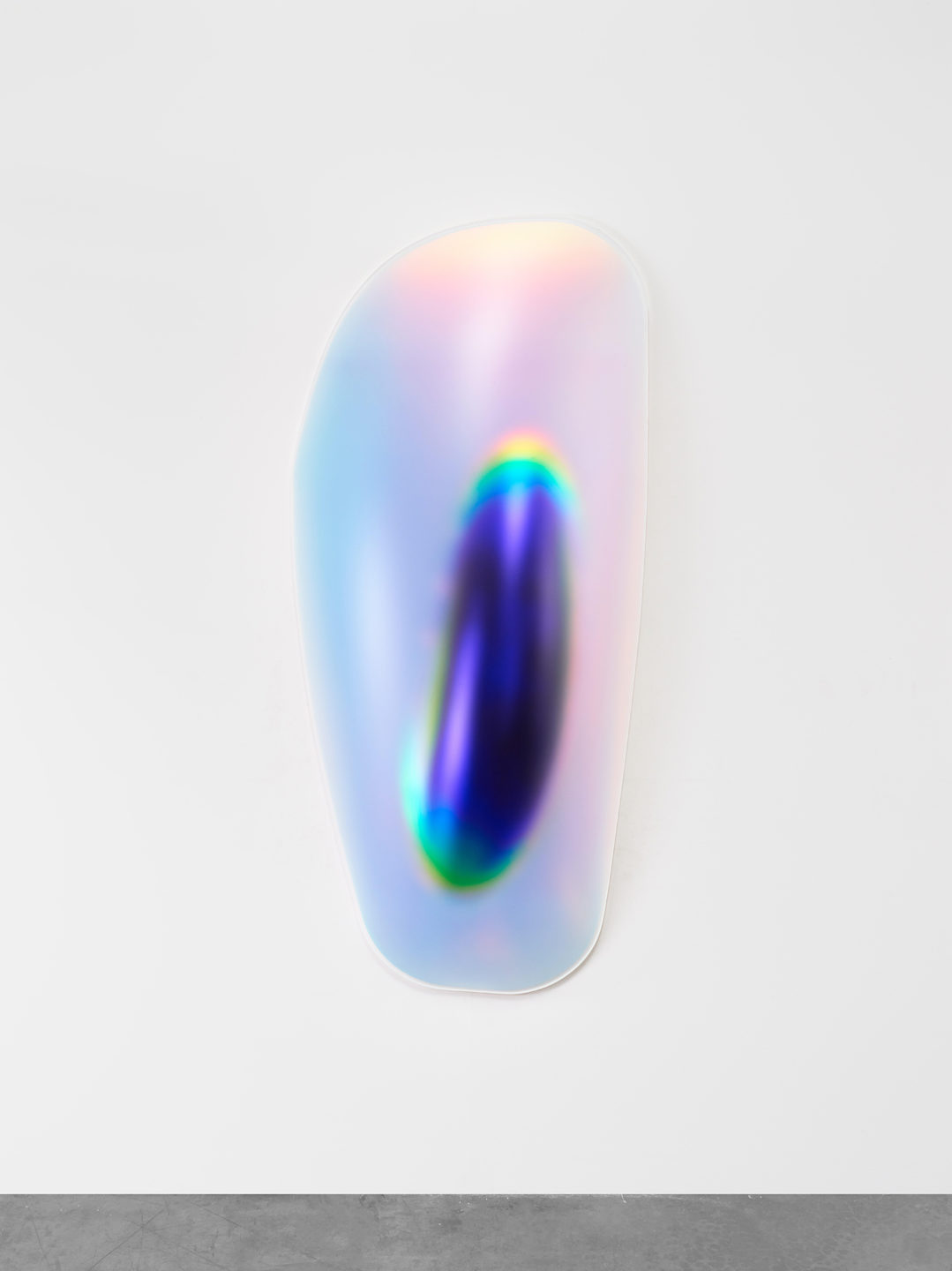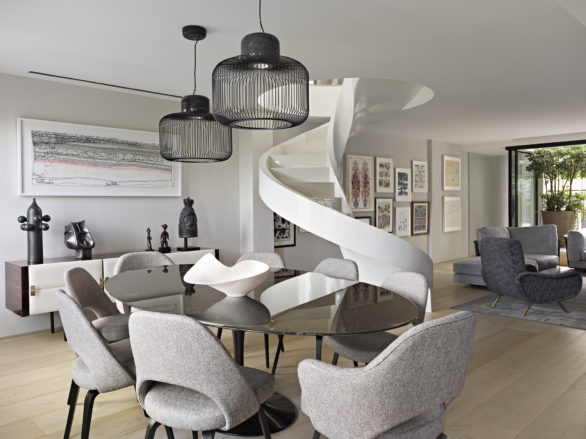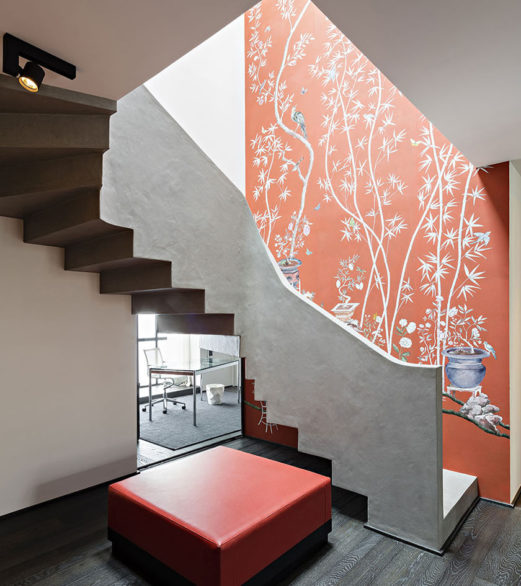I discovered the incredible work of Gisela in a collaboration with The Royal Ice Rink. By imagining their booth at the last edition of Brafa in Brussels I fell in love with these mysterious works.
With the dream of having a very quickly exposed in my interior.
Primitive vital energies
For her first exhibition in Europe, and in particular in Brussels, at the Royal Rink – Galerie Valérie Bach, Gisela COLON is tearing the white veil of contemporary art with works that, let us say it clearly, belong to the “never seen”. These extraordinary curved forms that take his paintings, made of thermo molded plexi, are futuristic anticipation, playing their iridescence, ie their infinite variations of lights and colors depending on the angle of view, which delight the eye as much as they jostle all our certainties.
From the cross between Californian minimalism and the kinetic art of the sixties is born all the great production of Gisela Colon who lives and works in Los Angeles.
His work lies precisely in this research of pure form and color, in perfect resonance with the “Light and Space Movement” of the artists of the West Coast at the beginning of the Sixties such James Turell, Bruce Nauman, Craig Kauffman, Robert Irwin, etc … Their works of that time were (and still are) such as in themselves, perfectly autonomous objects, directly inspired by the lights and colors of California, they appear in the eyes of the spectator in all their power, in their purity. absolute, without engaging the subjectivity of the looking subject.
The works of Gisela Colon, on the other hand, involve the spectator; in this way, it quotes the optico-kinetic art of the 60s, directly inspired by Carlos Cruz Diez (to whom the ice rink concomitantly devotes a great retrospective, because of this proximity to his work, precisely, and of which it claims inheritance), Horacio Garcia Rossi, Gregorio Vardanega, Karl Gerstner, Antonio Asis, Rafael Soto or Julio Le Parc.
Through his bodily movement in front of the work, the looking subject modifies the object being looked at; from this dialectic between subject and object is born the notion of participative work,
the spectator becoming an actor of the work of art. His position modifies and subjective the ambiguous and individual, personalized perception he has of the object. Movement, which is also the time of movement, modifies its vision: it is a question here of kinetic – optical art, introducing in art the fourth dimension, that of Time. All the originality of Gisela Colon’s work results from this synthesis of minimalism and optical art that can be described as “kinesthetic”.
These essentially mural cells possess in them a life, a form of organic capacity for mutation, as a promise for the future, like cells, placental plasma, cosmic eggs, very attractive and highly inspiring. Fascinating and mysterious, his works are also very soothing, referring to archetypal vital forms, going to awaken in us, deep in our subconscious, the very image of a vitality, a secret biology, very feminine, with round shapes, maternal, comfortable, slightly indefinite. Some will see cells, others matrices, others eyes, … all these curves caress our retinas in an extremely attractive and particularly captivating chromatic blur, which does not elude poetry, fantasy and dreams.
Keeping the manufacturing processes and the technical-material components totally secret, Gisela invites us to abandon ourselves to the reverie in front of these works of art of the future, definitively part of a post-contemporaneity where the quotations of the past return towards new researches new results made possible by new materials with effects as novel as they are touching.
These recent creations of static “monoliths” open a new dimension again in his work, organized around the theme of gender, since these “menhirs”, made of the same materials, the same techniques as his pods, immediately refer to the phallic forms of the more distant prehistory. If, on the one hand, his cells spoke of a buried femininity, his equally iridescent monoliths are, for their part, assumed and manifest allusions to the virile creative powers, from which a vital energy emanates. In a way, his two productions are intimately linked because they use light and color to reduce the gap between the two genres. The universality of visual perception here unifies forms that are defined in terms of sex, as a powerful link that evaporates borders.
All the work of Gisela Colon is traversed by these questions so human and contemporary, around the nature, of its perception, of the sexuality and the life, which are, in short, one and the same thing.
These pure forms and celestial colors, borrowed from the rainbow, are philosophical projections of a thought whose sole purpose is to respond to itself, disembodied from all function, bringing pure perception, disembodied, to be his own justification.
But it would be reductive to consider Gisela Colon’s works as a simple manifestation of a state of perception, as a materialistic phenomenology for the purposes of wonder or aesthetic satisfaction. It is a question, far beyond, to discover the mysteries of life, and to question the mysterious creative energy of the Big Bang, which can be summed up here only with light, in a primitive explosion of colors.
By this exhibition Gisela Colon asserts his status as a demiurge artist, like Ra, the Egyptian god whose light ensures the cycle of life. What more beautiful reference can one give to an artist than that of the creator god of the first civilization ?
Constantin Chariot








